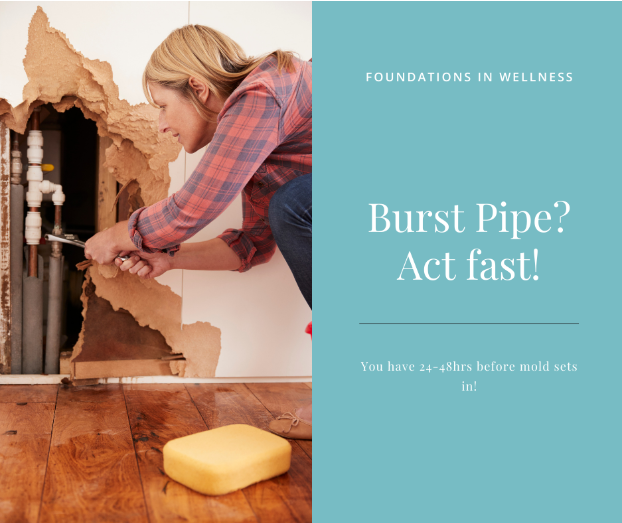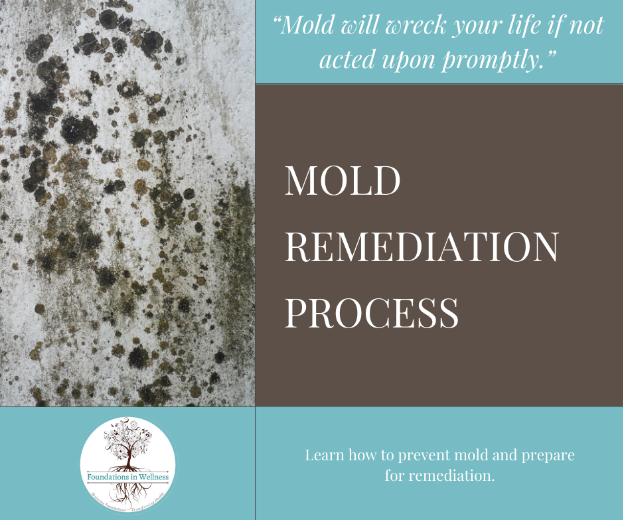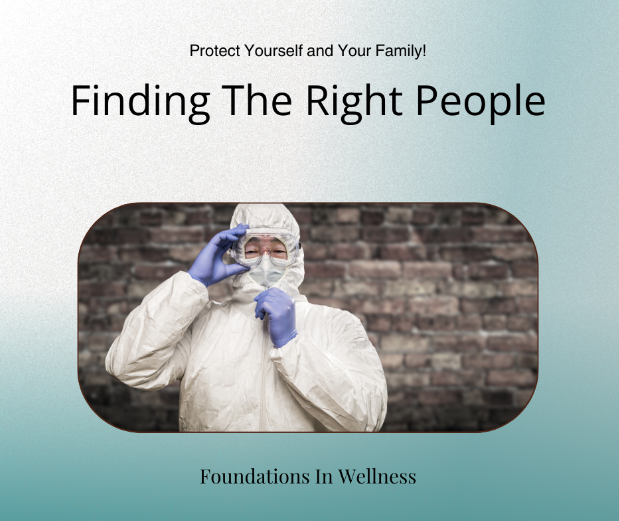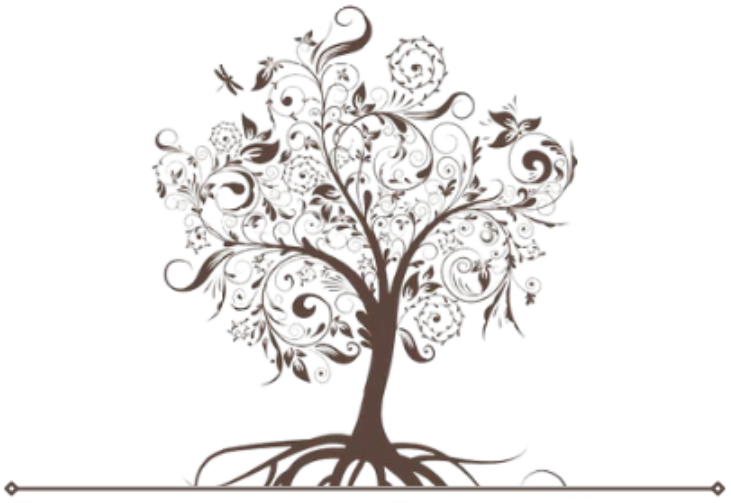
Indoor air quality is a critical aspect of our health, often overlooked, yet it poses a significant risk, contributing to numerous health complications annually. With the majority of individuals spending upwards of 90% of their time indoors, the environments of our homes and workplaces become paramount to our well-being. This guide is meticulously crafted to navigate you through the essentials of addressing water damage and mold infestation, a common yet formidable foe to indoor air quality. Whether you’re confronting the aftermath of a leak or seeking proactive measures, our insights aim to empower you with knowledge and strategies for a safer, healthier living space.
Scenario 1: The Urgent Discovery
Imagine this: You’re enjoying a quiet evening at home when suddenly, you’re startled by the sound of rushing water. Your heart sinks as you discover a burst pipe, water spilling everywhere, threatening the sanctuary of your home. In this critical moment, immediate action is not just advisable; it’s essential. Fixing the leak now and ensuring everything is dried within 48 hours can be the difference between a minor inconvenience and a major disaster. This scenario isn’t just about home maintenance; it’s a race against time to protect the memories and comfort your home embodies.
Scenario 2: The Silent Culprit Behind Chronic Illness
Now, picture a different kind of scenario, one that’s not as immediate but equally impactful. You’ve been battling chronic health issues, feeling fatigued, and just not yourself, despite trying everything to get better. Then, it hits you. You remember the basement flood from last year or the storm that damaged your roof, allowing water to sneak into your home, unseen but not unfelt. This revelation isn’t just about home repair; it’s a journey towards reclaiming your health. Your home, your haven, might be harboring mold from past water damage, silently affecting your well-being. It’s a story of resilience, of piecing together the puzzle of your health, and taking that crucial step towards inspection and remediation.
Effective Mold Remediation: Identifying Materials for Removal vs. Cleaning
When facing mold contamination in your home or workplace, understanding the distinction between materials that require removal and those that can be effectively cleaned is crucial for a successful remediation process. Here’s a guide to help you navigate this essential aspect of mold elimination.
Materials to Remove in the Event of Mold Contamination:
Certain building materials, once contaminated with mold, cannot be salvaged and must be removed promptly to prevent further spread. These include:
- Compressed Wood: Often used in furniture and cabinetry, compressed wood, when mold-infested, is difficult to clean due to its porous nature.
- Drywall: Mold spores can penetrate deep into drywall, making it impossible to clean thoroughly.
- Ductwork: Infested ductwork can spread mold spores throughout the building, necessitating complete removal and replacement.
Salvageable Materials: Cleaning vs. Replacement
Not all materials need to be discarded in the face of mold. Some can be restored through proper cleaning techniques, including:
- Solid Wood: Structural elements like framing and studs can often be cleaned and treated for mold, thanks to their less porous nature.
- Solid Surfaces: Non-porous materials such as metal, tile, and glass can typically be cleaned effectively, removing mold without the need for replacement.
Understanding the difference between materials that must be removed and those that can be cleaned is a critical step in effective mold remediation. By addressing mold contamination with the appropriate strategy, you can ensure a healthier indoor environment and prevent future mold growth.
Phase 1: Comprehensive Mold Source Remediation Strategy
Embarking on mold remediation involves meticulous preparation and execution to ensure the complete removal of mold sources and prevent future growth. Here’s a detailed breakdown of the initial phase in the mold remediation process.

Preparation for Mold Remediation
The first step in addressing mold contamination involves setting up a controlled environment to prevent the spread of mold spores during the remediation process:
- Establish Dual Entry Containment: Create a sealed area with two entries to maintain control over the environment.
- Maintain Proper Pressure: Implement negative air pressure within the containment to prevent mold spore dispersal.
- Seal HVAC Vents & Registers: Prevent contamination of the HVAC system by sealing off vents and registers.
- Protect Non-Removable Fixtures: Wrap fixtures that cannot be removed from the containment area to shield them from contamination.
- Secure and Remove Contents: Carefully wrap and remove any movable items within the containment zone to avoid cross-contamination.
- Carpeting Removal: Wrap and remove any carpeting within the containment area to eliminate potential mold sources.
- Implement HEPA Air Scrubbing: Use HEPA air scrubbers to filter out mold spores from the air, enhancing indoor air quality.
Removal & Cleaning Process
The core of mold source remediation lies in the thorough removal and cleaning of contaminated materials:
- Demolition and Removal: Carefully demolish, wrap, and remove any building materials impacted by mold. Ensure removal extends 2 feet beyond the visibly damaged or suspected mold-contaminated areas to prevent overlooked growth.
- HEPA Vacuum and Anti-Microbial Cleaning: Use a HEPA vacuum on all surfaces within the containment area, followed by a damp wipe with a low or no VOC anti-microbial solution, ensuring no construction debris or dust remains.
- Deep Cleaning of Contaminated Areas: Perform a HEPA vacuum and clean contaminated areas using a low or no VOC cleaning surfactant. Techniques like wire brushing or sanding may be necessary for thorough mold removal.
- Seal Gaps: Use silicone to seal any gaps in framing or building materials, fortifying the area against future mold intrusion.
Phase 1 of mold remediation is critical in laying the groundwork for a mold-free environment. By adhering to these detailed preparation and cleaning guidelines, you can effectively tackle mold at its source, ensuring a safer and healthier indoor space.
Selecting a Certified Mold Remediation Professional

Choosing the right mold remediation expert is crucial for effectively addressing mold issues in your home or workplace. Here’s how to ensure you hire a qualified and certified professional for the job. Take great care in hiring a mold remediator and make sure he or she is certified. Certification is a critical starting point, but digging deeper into a remediator’s qualifications is necessary for making an informed decision. Consider the following when evaluating potential candidates:
Key Certifications for Mold Remediation Professionals
When selecting a mold remediator, prioritize those with recognized certifications, indicating they have undergone rigorous training and adhere to industry standards:
- IICRC (Institute of Inspection, Cleaning, and Restoration Certification): A leading certification body, widely recognized for setting the standards in mold remediation.
- ACAC (American Council for Accredited Certification): Offers third-party accredited certifications, ensuring a high level of expertise.
- IAQA (Indoor Air Quality Association): While it doesn’t offer certifications, it’s a reputable membership organization. Certification is managed by the ACAC under an agreement.
- RIA (Restoration Industry Association): A respected industry body that provides resources and support for restoration professionals.
- NORMI (National Organization of Remediators and Mold Inspectors): Offers certifications and training focused on mold inspection and remediation.
Evaluating a Mold Remediation Expert
Beyond certifications, consider these critical factors to assess the suitability of a remediation expert:
- Adherence to Standards: Ask if they follow the IICRC S520 or Surviving Mold standards, ensuring they use recognized procedures.
- Accreditation: Confirm their accreditation with bodies like IICRC/ACAC, which signals a commitment to best practices.
- Health & Safety Prioritization: Ensure the health and safety of workers and occupants are of primary importance to them.
- Equipment Maintenance: Check if they maintain their equipment in good, clean condition, which is crucial for effective remediation.
- Comprehensive Services: Find out if they offer inspections in addition to remediation, providing a full spectrum of services.
- References: Request references to gauge their experience and effectiveness in previous projects.
The Challenge with Finding a True Mold Expert
While many claim expertise in mold remediation, it’s essential to be cautious:
- Expertise Claims: Be wary of those who claim to be mold experts without the certifications or references to back it up.
- Avoiding Shortcuts: Some remediators may use shortcuts like fogging or surface cleaning, which are often ineffective in the long term.
- Understanding Their Approach: Recognize that some view their work purely as a construction project, focusing on speed rather than thoroughness.
Selecting the right mold remediation professional is a critical decision that impacts the effectiveness of the mold removal process and the health of your indoor environment. By focusing on certified experts who prioritize standards, health, and thoroughness, you can ensure a successful remediation outcome.
- IICRC (Institute of Inspection, Cleaning and Restoration Certification)
- ACAC (American Council for Accredited Certification)—a certifying body that is third-party accredited.
- The IAQA (Indoor Air Quality Association)—a membership organization with no certification program (the ACAC handles this by agreement)
- RIA (Restoration Industry Association)
- NORMI (National Organization of Remediators and Mold Inspectors)
Understanding Indoor Environment Conditions: A Guide Based on IICRC Standards
Navigating the complexities of indoor air quality starts with understanding the conditions defined by the Institute of Inspection, Cleaning, and Restoration Certification (IICRC). These standards help identify the level of fungal contamination within indoor environments, guiding the remediation process to ensure a healthy living or working space.
Condition 1: Normal Fungal Ecology
The goal of any remediation effort is to restore the affected building and its contents to Condition 1, characterized by:
- The presence of settled spores, fungal fragments, or actual growth typical of a normal fungal ecology. This baseline condition represents a balanced indoor environment where fungal presence does not exceed outdoor levels.
Condition 2: Elevated Spore or Fungal Fragment Levels
In this condition, there may be:
- Elevated levels of individual molds, as indicated by ERMI (Environmental Relative Moldiness Index) scores, often with HERTSMI-2 (Health Effects Roster of Type Specific Formers of Mycotoxins and Inflammagens – 2nd Version) scores of 12-14 or greater.
- Contamination from settled spores or fungal fragments originating from a Condition 3 area, possibly including traces of actual growth. This scenario is often referred to as cross-contamination.
Condition 3: Active Mold Growth
This most severe condition is identified by:
- Actual mold growth, which may be active or dormant, visible or hidden, as detected through swabbing or tape lifts by an Indoor Environmental Professional (IEP).
- The presence of both settled spores and fungal fragments alongside active growth areas.
The Importance of Indoor Air Quality
The Environmental Protection Agency (EPA) ranks poor indoor air quality among the top five environmental risks to public health. Surprisingly, indoor air can be up to ten times more polluted than outdoor air, primarily due to inadequate ventilation that leads to the accumulation of contaminants and recirculation of stagnant air. Long-term exposure to indoor air pollutants has been linked to accelerated cognitive decline in older adults.
Enhancing Your Indoor Air Quality
One of the most effective measures to improve indoor air quality is the integration of a high-quality air purifier. By actively filtering out pollutants, an air purifier can significantly reduce the concentration of contaminants in indoor spaces, contributing to a healthier and more comfortable environment.
Leading Organizations in Mold Remediation and Indoor Air Quality Certification
When seeking professional mold remediation services or aiming to understand industry standards, it’s essential to be familiar with the primary organizations that set these benchmarks and offer certifications. Here’s an overview of the key entities:
IICRC: Institute of Inspection, Cleaning, and Restoration Certification
- Overview: The IICRC is a leading certification and standard-setting organization in the inspection, cleaning, and restoration industry. It offers comprehensive training and certification programs for professionals, ensuring high-quality practices in mold remediation and related services.
ACAC: American Council for Accredited Certification
- Overview: Recognized for its third-party accreditation, the ACAC offers rigorous certification programs for professionals in environmental testing, including mold inspection and remediation. Its certifications are respected for their depth and the expertise they represent in the field.
IAQA: Indoor Air Quality Association
- Overview: As a prominent membership organization, the IAQA focuses on educating and networking professionals in the indoor air quality industry. While it does not offer certifications directly, it collaborates with the ACAC to promote standards and practices that ensure healthy indoor environments.
RIA: Restoration Industry Association
- Overview: The RIA serves as a global network of cleaning and restoration professionals, offering education, advocacy, and standards for best practices. It is dedicated to advancing the professionalism and effectiveness of the restoration industry, including mold remediation.
NORMI: National Organization of Remediators and Mold Inspectors
- Overview: NORMI provides training, certification, and resources for professionals in mold inspection and remediation. It aims to elevate the standards of practice within the industry, ensuring that professionals are equipped to handle mold challenges effectively.
Embrace Action: The Cost of Inaction Is Too High
As we navigate the sanctuaries we call home, the invisible threat of mold looms larger than we often realize. The journey through understanding mold’s impact, its remediation, and the critical role of certified professionals is more than a quest for a clean environment—it’s a vital step towards safeguarding our health and that of our loved ones.
Ignoring the signs of mold, or delaying action, isn’t merely a postponement of a task; it’s a gamble with our well-being. The environments we cherish, our homes, where we seek refuge and comfort, can quickly become breeding grounds for contaminants that threaten to undermine our health, silently eroding the quality of our lives. The stark reality is that indoor air, potentially laden with mold spores, can be up to ten times more polluted than the air outside, harboring agents that accelerate cognitive decline and exacerbate chronic health conditions.
The choice to investigate and address mold with the seriousness it demands is not one of mere home maintenance; it is a profound act of self-care and responsibility. Engaging with certified professionals, understanding the nuances of mold remediation, and taking decisive action are steps that cannot be delayed. The cost of inaction is not measured in mere dollars spent on repairs but in the irreversible toll on our health and cognitive functions.
Let this be a call to action, not out of fear, but out of a deep-seated desire to protect and nurture the health and sanctity of our living spaces. The path to a healthier home and, by extension, a healthier life, begins with the courage to confront and mitigate the risks head-on. Your home is your haven, and ensuring its air is clean and free from mold is not just a task—it’s a testament to your commitment to the well-being of everyone who crosses its threshold.
Take the step today. The cost of inaction is far too great, and the rewards of a mold-free home—a sanctuary of health and peace—are immeasurable. Your health, and that of your loved ones, deserves no less.


